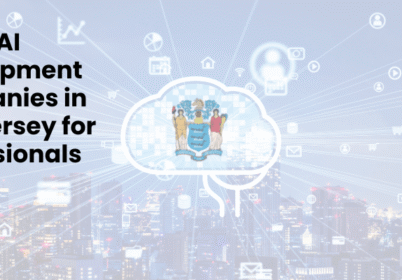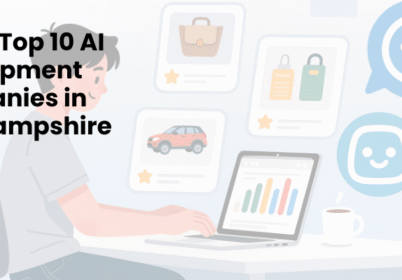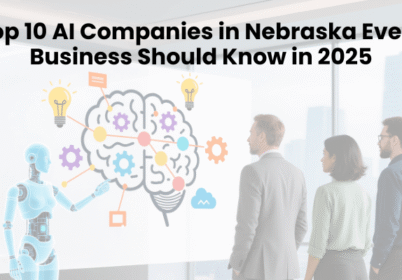AI Agent Development Costs in 2025: A Complete Strategy Guide for Business Leaders
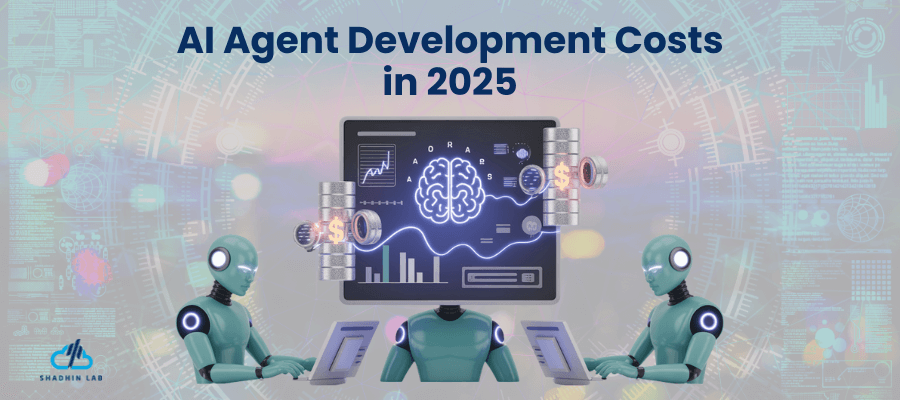
Table of Contents
Are you considering implementing AI agents in your business but feeling overwhelmed by the potential costs? Understanding AI Agent Development Cost does not have to be complicated or intimidating. By the end of this guide, you will have a clear picture of what factors influence AI agent development costs.
The demand for AI agents is skyrocketing across industries in 2025. Whether you are a small business owner exploring your first AI implementation or an enterprise leader, understanding the true cost of AI Agent Development Cost is crucial for your planning process.
Let us explore this together and demystify AI agent development costs to help you make confident, informed decisions about your AI investment strategy.
主要ポイント
- Clarity of Objectives: Define your business goals before starting development to ensure measurable ROI.
- Incremental Investment: Begin with a Minimum Viable Product (MVP) to reduce risk and validate business value.
- Hidden Costs Matter: Account for compliance, cloud resources, third-party APIs, and ongoing optimization.
- Total Cost of Ownership: Budget for maintenance, retraining, and scaling, which often equal 15–30% annually.
- Right Partnership: Select a development partner who understands both AI technology and business operations.
- Cost Ranges: Small business AI agents start from $25K, while enterprise-grade solutions can exceed $500K.
- Smart Savings: Use pre-trained models and frameworks to cut development costs by 30–50%.
- Flexible Pricing Models: Choose between hourly, fixed-price, dedicated teams, or SaaS depending on your needs.
Long-term Value: AI agents deliver returns through efficiency, scalability, and improved customer experiences.
Table of Contents
What is an AI Agent?
An AI agent is a software entity that can perceive its environment, make decisions, and take actions to achieve specific goals with varying degrees of autonomy.
Think about your business needs for a moment. Do you require systems that can independently handle customer inquiries or analyze data and provide actionable insights? AI agents can perform these tasks with minimal human intervention.

Unlike simple automation tools or basic chatbots, true AI agents can learn from interactions and adapt to new situations. This capability makes them valuable for businesses looking to scale operations without increasing human resources.
The sophistication of AI agents ranges widely—from simple rule-based systems to complex autonomous entities. Your specific business requirements will determine where on this spectrum your ideal AI agent falls.
Understanding what an AI agent is helps you better evaluate the cost factors we will explore next.
Key Factors Influencing AI Agent Development Cost
Are you trying to figure out why AI Agent Development Cost quotes vary so dramatically? Several critical factors influence the cost of building an AI agent tailored to your business needs.
Your specific requirements will significantly impact the final price tag. Let us examine the key factors that will affect your investment:
| Factor | Impact on Cost | What This Means for You |
| AI Model Complexity | High | More sophisticated decision-making capabilities require more extensive development resources |
| Development Team Expertise | Medium to High | Specialized AI talent commands premium rates but delivers higher quality results |
| Integration Requirements | Medium to High | Connecting your AI agent with existing systems adds complexity and cost |
| Industry-Specific Requirements | Variable | Regulated industries like healthcare or finance require additional compliance measures |
| Infrastructure Needs | Medium | Cloud-based vs. on-premises deployment affects both initial and ongoing costs |
| Data Requirements | High | The quality and quantity of training data significantly impacts development time |
When you evaluate potential AI agent development projects, consider how each of these factors applies to your situation. For example, if your business operates in healthcare, you will need to account for compliance costs.
Have you thought about the complexity of the tasks you want your AI agent to perform? The more nuanced the decision-making required, the more expensive the underlying AI models will be.
Tip: Before requesting quotes from developers, create a detailed specification document outlining exactly what you want your AI agent to accomplish.
Breakdown of AI Agent Development Costs
Understanding the cost breakdown across the entire development lifecycle helps you plan your budget more effectively and prevents unexpected expenses.
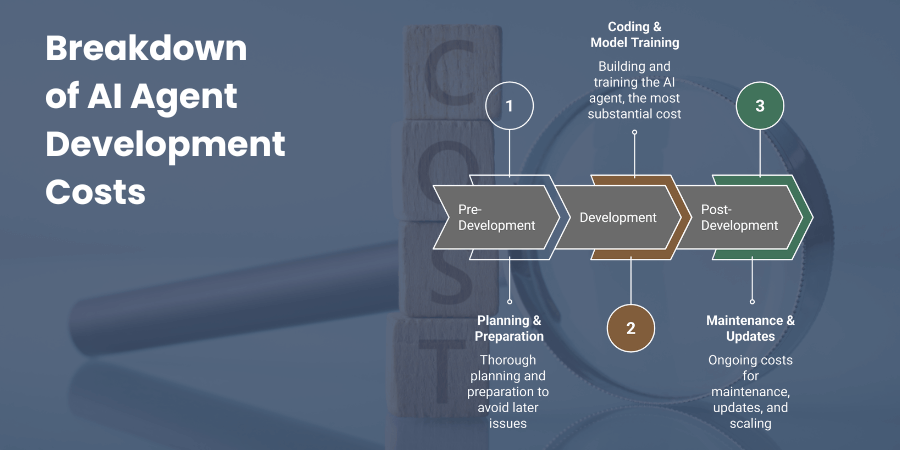
Pre-Development Costs
Before a single line of code is written, you will need to invest in thorough planning and preparation:
- Business requirements analysis: Defining exactly what you want your AI agent to accomplish
- Market research: Understanding how similar AI solutions function in your industry
- Data collection and preparation: Gathering and organizing the data needed to train your AI agent
- Prototype development: Creating a simplified version to test core concepts
Many businesses underestimate the importance of this phase, but investing adequately here can save you significant costs later.
Development Costs
This is typically the most substantial portion of your investment and includes:
- AI model selection and training: Choosing appropriate algorithms and training them on your data
- Integration development: Building connections between your AI agent and existing systems
- User interface design: Creating intuitive ways for users to interact with your AI agent
- Testing and validation: Ensuring your AI agent performs reliably across various scenarios
The complexity of your AI agent directly impacts these costs. An AI agent that needs to understand natural language requires more sophisticated models than one that simply categorizes data.
Post-Development Costs
Many businesses focus exclusively on the initial development costs but overlook the ongoing expenses:
- Monitoring and maintenance: Ensuring your AI agent continues to function correctly
- Performance optimization: Improving efficiency and effectiveness over time
- Model retraining: Updating your AI agent with new data to maintain accuracy
- Scaling infrastructure: Expanding resources as usage increases
These ongoing costs typically range from 15-30% of your initial development investment annually.
Cost Estimates for AI Agent Development in 2025
Understanding general cost ranges can help you set realistic expectations and plan accordingly.
The following table provides estimated cost ranges based on project complexity and business size:
| Project Scale | Complexity | Features | Estimated Cost Range (USD) |
| Small Business | Basic | Simple decision-making, limited integrations, rule-based responses | $25,000 – $75,000 |
| Mid-Size Business | Moderate | Natural language processing, multiple integrations, basic learning capabilities | $75,000 – $200,000 |
| Enterprise | Advanced | Complex decision-making, extensive integrations, advanced learning, custom algorithms | $200,000 – $500,000+ |
Remember that these figures represent the total project cost, including all phases we discussed earlier.
Many organizations start with a smaller, focused implementation and expand capabilities over time as they realize returns on their initial investment.
For example, you might begin with an AI agent that handles a specific customer service function, then gradually expand its capabilities to cover additional use cases.
Many businesses find that AI agents deliver returns through increased efficiency or improved customer experiences within 12-18 months of deployment.
Hidden Costs in AI Agent Development
Being aware of potential additional expenses helps you plan more accurately and avoid budget surprises. Here are the most common hidden costs you should account for:

Cloud Infrastructure and Storage
Your AI agent will require computing resources to run effectively. Depending on the complexity and usage patterns, cloud costs can escalate quickly.
Many businesses underestimate these costs, especially as their AI agent usage scales up. Cloud providers typically charge based on computing resources, storage, and data transfer.
Data Privacy and Compliance
Regulatory requirements like GDPR, HIPAA, or industry-specific regulations can add substantial costs:
- Specialized development work to ensure compliance
- Regular security audits and assessments
- Documentation and reporting systems
- Potential legal consultation
If your AI agent handles sensitive customer information, these compliance costs become even more significant.
Third-Party API and Service Fees
Your AI agent may need to connect with external services that charge usage-based fees:
- Language processing APIs
- Payment processing services
- External data sources
- Specialized AI capabilities
These costs typically scale with usage, meaning your expenses will increase as your AI agent handles more interactions.
Ongoing Training and Optimization
AI models require regular retraining to maintain accuracy and relevance:
- Data collection and preparation
- Computing resources for training
- Expert time for model evaluation and tuning
- Potential downtime during updates
Many businesses underestimate how frequently their AI models will need retraining, especially in dynamic environments.
Tip: Request detailed information about ongoing maintenance and optimization costs from potential development partners.
How to Reduce AI Agent Development Costs
Several strategic approaches can help you significantly reduce costs without compromising on quality or capabilities.

Choosing the Right Development Approach
One of the most impactful decisions is whether to build your AI agent in-house, outsource development, or use a hybrid approach:
In-house development gives you maximum control but requires hiring specialized talent and building infrastructure.
Outsourcing to specialized AI development firms can be more cost-effective for single projects, as you benefit from their existing expertise.
Many businesses successfully combine internal strategic direction with external technical expertise, optimizing both cost and control.
Leveraging Pre-trained Models and Frameworks
Why build everything from scratch when you can start with existing foundations? Pre-trained AI models and development frameworks can dramatically reduce your development time and costs:
- Open-source language models as a starting point for your conversational agent
- Existing computer vision models that you fine-tune for your specific use case
- Development frameworks that handle common AI agent functions
This approach can reduce development costs by 30-50% compared to building custom solutions from the ground up.
Starting with a Minimum Viable Product (MVP)
Consider starting with a focused MVP that addresses your most critical business needs:
- Validate the business value before making larger investments
- Gather real-world feedback to guide further development
- Start generating returns sooner while spreading development costs over time
- Identify and address issues early when they are less expensive to fix
When planning your AI agent MVP, focus on solving one specific business problem exceptionally well rather than attempting to address multiple challenges.
AI Agent Development Pricing Models
The pricing model you choose can significantly impact both your budget planning and the overall success of your project.
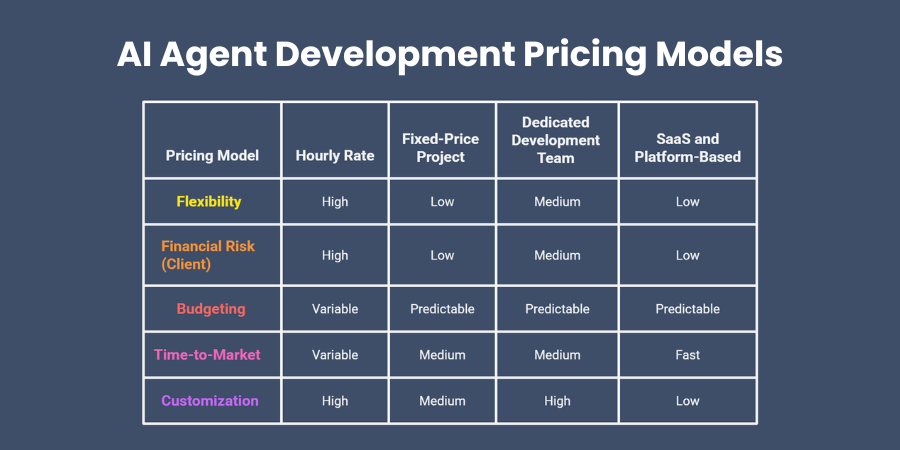
Hourly Rate Model
With this approach, you pay for the actual time spent on development:
- Flexibility to adjust scope as the project progresses
- Transparency in how development time is allocated
- Lower risk for the development partner
However, this model places most of the financial risk on you as the client.
Fixed-Price Project Model
This model provides a predetermined price for a clearly defined scope of work:
- Budget certainty and easier financial planning
- Shifted risk to the development partner
- Clear deliverables and timelines
The trade-off is reduced flexibility—changes to requirements typically trigger renegotiation and additional costs.
Dedicated Development Team Model
This approach involves hiring a consistent team that works exclusively on your project:
- Scalable resources that can adjust to project needs
- Team continuity throughout the development lifecycle
- Balance between flexibility and predictability
This model works particularly well for complex, evolving projects where requirements may change based on early results.
SaaS and Platform-Based Models
These models involve building your AI agent on existing platforms with subscription-based pricing:
- Lower upfront costs with predictable ongoing expenses
- Faster time-to-market with pre-built components
- Reduced technical complexity and maintenance burden
The limitation is less customization and potential vendor lock-in.
Develop Your AI Agent with Shadhin Lab
Shadhin Lab specializes in creating cost-effective AI solutions tailored to your specific business needs.
Strategic Assessment and Planning
Before writing a single line of code, we work with you to understand:
- Your specific business objectives and success metrics
- Current processes that the AI agent will enhance or replace
- Available data resources and quality
- Integration requirements with existing systems
This thorough planning phase helps prevent costly changes and rework later in the development process.
Transparent Cost Structure
Our detailed proposals break down costs for:
- Each development phase and component
- Required infrastructure and third-party services
- Testing and quality assurance
- Post-deployment support and maintenance
This transparency helps you make informed decisions about feature prioritization and budget allocation.
Scalable Development Approach
Our development methodology adapts to your budget constraints while ensuring quality results:
- Phased implementation that delivers value at each stage
- Strategic use of pre-trained models and frameworks where appropriate
- Efficient resource allocation based on component complexity
- Continuous evaluation of development priorities against business impact
This approach allows you to start realizing returns on your investment earlier while spreading development costs over time.
Long-term Partnership Focus
We view successful AI agent development as the beginning of a valuable partnership:
- Knowledge transfer to your team
- Ongoing optimization and performance monitoring
- Regular model retraining and updates
- Scaling support as your needs evolve
This partnership approach ensures your AI agent continues delivering value long after initial deployment.
Conclusion
Throughout this guide, we have explored the factors that impact AI Agent Development Cost, potential hidden costs, and strategies to optimize your investment.
Remember that AI agent development is not just a technical project—it is a business investment that should deliver measurable returns. Consider these key takeaways:
Start with clear business objectives rather than focusing on technology. When you define specific problems you want to solve, you can better evaluate the potential return on your AI investment.
Take an incremental approach that allows you to validate value at each stage. This strategy reduces risk and helps you refine your AI agent based on real-world feedback.
Consider the total cost of ownership, including ongoing maintenance, updates, and scaling. These long-term expenses often represent a significant portion of your overall investment.
Choose the right development partner who understands both the technical aspects of AI and your business realities. The right collaboration can significantly impact both the cost and success of your implementation.
As AI technology continues to evolve rapidly, the costs of development are becoming more accessible for businesses of all sizes. With strategic planning, you can implement AI agents that deliver substantial business value while respecting your budget constraints.
Frequently Asked Questions
How long does it typically take to develop an AI agent?
Development timelines vary significantly based on complexity, but you can generally expect 3-6 months for a basic AI agent, 6-12 months for a moderately complex implementation, and 12+ months for advanced enterprise solutions. A phased approach allows you to start realizing value sooner while spreading development over a longer period.
Can I build an effective AI agent with a limited budget?
Yes, you can create valuable AI agents with budget constraints. The key is focusing on a specific, high-impact use case rather than attempting to build a comprehensive solution immediately. By leveraging pre-trained models and starting with a focused MVP, you can create an effective AI agent that delivers business value.
How do I measure the ROI of my AI agent investment?
To effectively measure ROI, establish clear metrics before development begins. These might include labor cost savings, increased sales conversion rates, reduced error rates, or improved customer satisfaction scores. The most compelling ROI calculations compare specific before-and-after measurements of these metrics.
What ongoing maintenance costs should I expect after deployment?
You should budget for ongoing maintenance costs of approximately 15-30% of your initial development investment annually. These expenses cover regular model retraining, performance monitoring, bug fixes, and security updates. Cloud infrastructure costs will also continue and typically scale with usage.
Is it better to build a custom AI agent or use an existing platform?
This decision depends on your specific requirements, budget constraints, and timeline. Custom development offers maximum flexibility but requires greater investment. Platform-based solutions provide faster implementation and lower upfront costs but may limit customization. Many businesses find that a hybrid approach offers an optimal balance for their specific needs.
Shaif Azad
Related Post
Top 10 AI Development Companies in New Jersey for Business
Are you searching for the perfect AI development partner in New Jersey? Have you wondered which...
Top 10 AI Development Companies in New Hampshire
Are you watching New Hampshire’s tech landscape transform before your eyes? Your state is quietly becoming...
Top AI Companies in Nebraska Every Business Should Know
Are you a Nebraska business owner wondering how artificial intelligence could transform your operations? Picture this...

